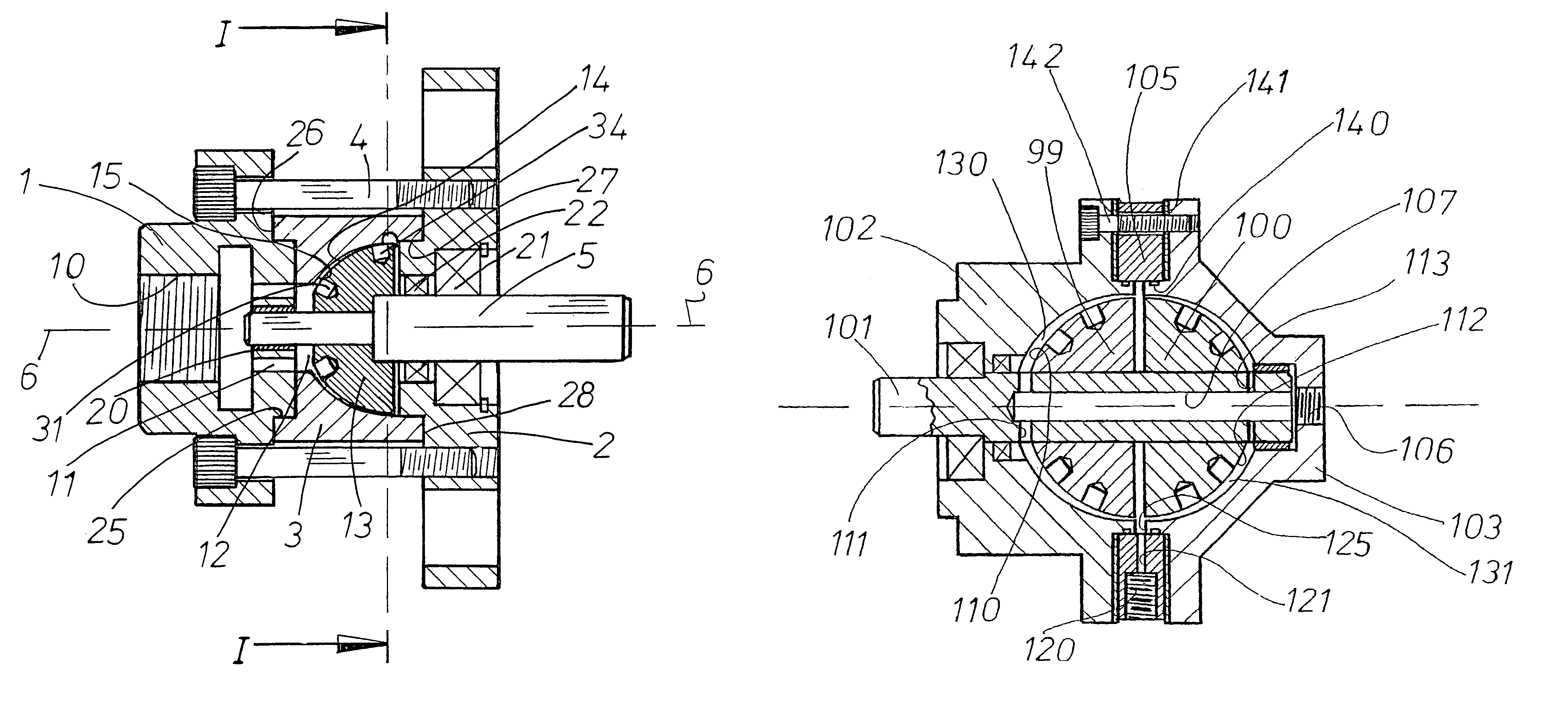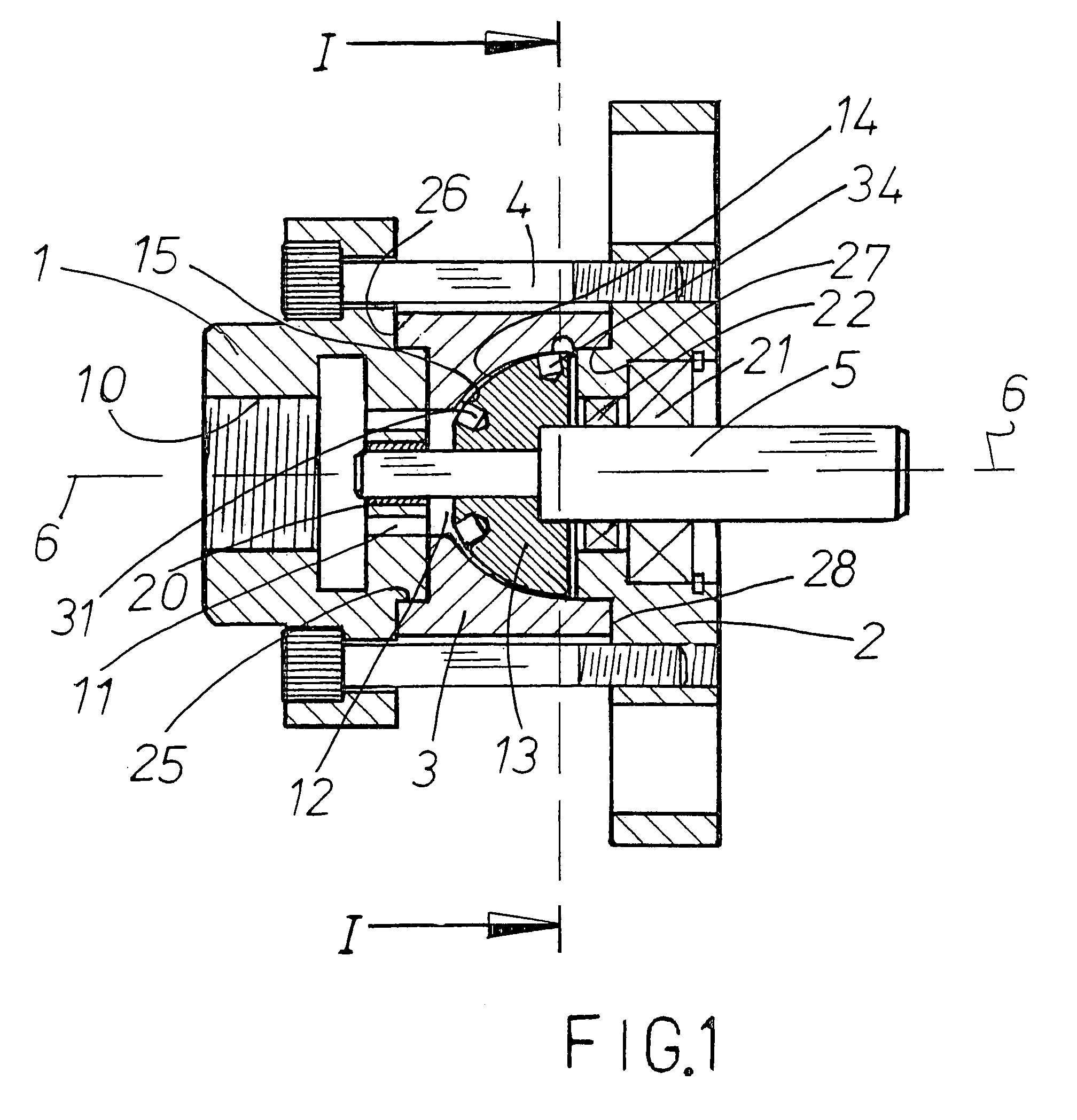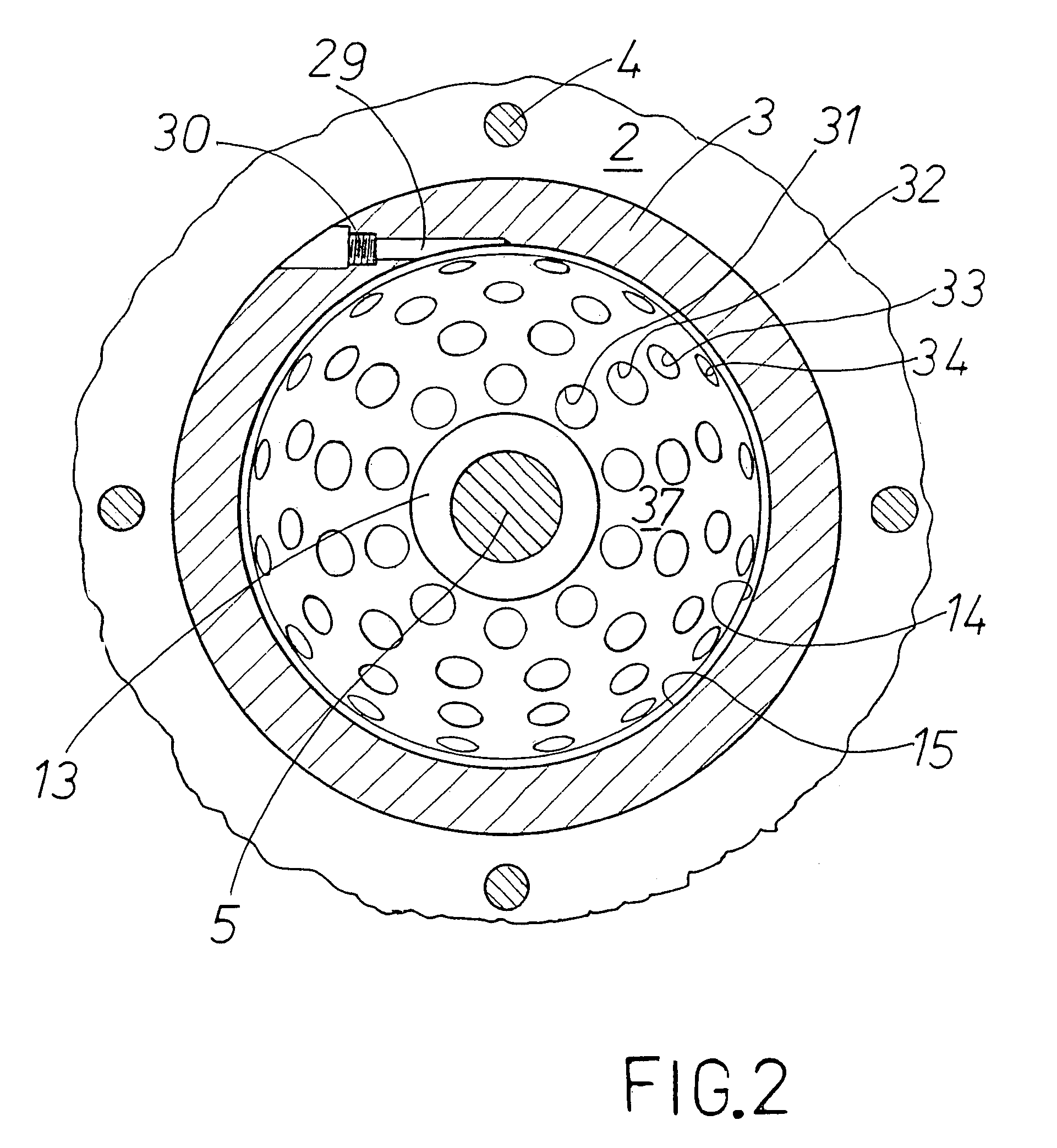Apparatus and method for heating fluids
a technology of apparatus and liquid, applied in the direction of heating fuel, steam generation using mechanical energy, other heat production devices, etc., can solve the problems of poor operation performance, poor reliability of the rotor, and the need for complicated and expensive components, so as to minimize the risk of bearing and seal failure and keep the rotor compact
- Summary
- Abstract
- Description
- Claims
- Application Information
AI Technical Summary
Benefits of technology
Problems solved by technology
Method used
Image
Examples
second embodiment
DETAILED DESCRIPTION OF THE INVENTION
[0041]Referring to FIGS. 3 and 4, the device here differs from the first embodiment in two main respects. Firstly, the housing structure surrounding the rotor 50 is comprised of two housing elements instead of three: a rear housing member 51 and a front housing member 52. Housing elements 51, 52 connect together on register 53 with seal 54 disposed at the interface, and a number of bolts 56 fasten housing elements 51, 52 together. A drive shaft 57 is supported in the housing by a pair of bearings, 60, 61, drive shaft 57 having a longitudinal axis of rotation denoted as 58. A seal such as a rotary lip seal 63 is seated in housing element 52 and where a pocket 79 separates seal 63 from rotor 50. A fluid port connection 65 fluid inlet 65 is disposed in housing element 51 which preferably for many application will serve as the fluid inlet, whereas housing element 51 includes passage 66 which preferably for many application will serve as the fluid exi...
third embodiment
DETAILED DESCRIPTION OF THE INVENTION
[0044]The device of FIG. 5 employs double hemi-spherical rotors 99, 100, here called a rotor assembly group, where both rotors 99, 100 are preferably driven by a common drive shaft 101 and located inside a housing structure comprising front and rear housing elements 102, 103, and a centrally located sandwich plate 105. The hemi-spherical rotors 99, 100 effectively divide the interior chamber formed by the housing into sub-chambers. Fluid enters the device at inlet 106 and travels through longitudinal hole 107 in drive shaft 101 towards the smaller diameter front-ends 110, 112 of respective rotors 99, 100 by means of respective radial drillings 111, 113 in drive shaft 101. Sandwich plate 105 is provided with fluid exit 120 and passage 121 which communicates with the interior space denoted as 125 which lies radially outwards of rotors 99, 100 and radially inwards of the bore of sandwich plate 105. Fluid entering respective fluid passage gap regions...
fourth embodiment
DETAILED DESCRIPTION OF THE INVENTION
[0045]As the device of FIGS. 6 and 7 differs in two main respects from the third embodiment, it is only necessary to describe the important differences.
[0046]In this example, the rotor and drive shaft are combined together in one rotational element 150, and where element 150 is provided with a first series of openings 151 over the hemi-spherical shaped portion surface 152 and a second series of openings 153 disposed on end face portion 154. The rotating element 150 is supported by bearings 155, 156 in housing members 157, 158, respectively, and where housings 157, 158 are provided with respective interior surfaces 159, 160 that form an internal chamber 161 occupied by rotatable element 150.
[0047]Fluid entering the device at inlet 165 travels through hole 166 in rotatable element 150, and where respective radial holes 167, 168 direct this fluid to the working clearances of the device, namely the first fluid passage gap region formed between interi...
PUM
 Login to View More
Login to View More Abstract
Description
Claims
Application Information
 Login to View More
Login to View More - R&D
- Intellectual Property
- Life Sciences
- Materials
- Tech Scout
- Unparalleled Data Quality
- Higher Quality Content
- 60% Fewer Hallucinations
Browse by: Latest US Patents, China's latest patents, Technical Efficacy Thesaurus, Application Domain, Technology Topic, Popular Technical Reports.
© 2025 PatSnap. All rights reserved.Legal|Privacy policy|Modern Slavery Act Transparency Statement|Sitemap|About US| Contact US: help@patsnap.com



